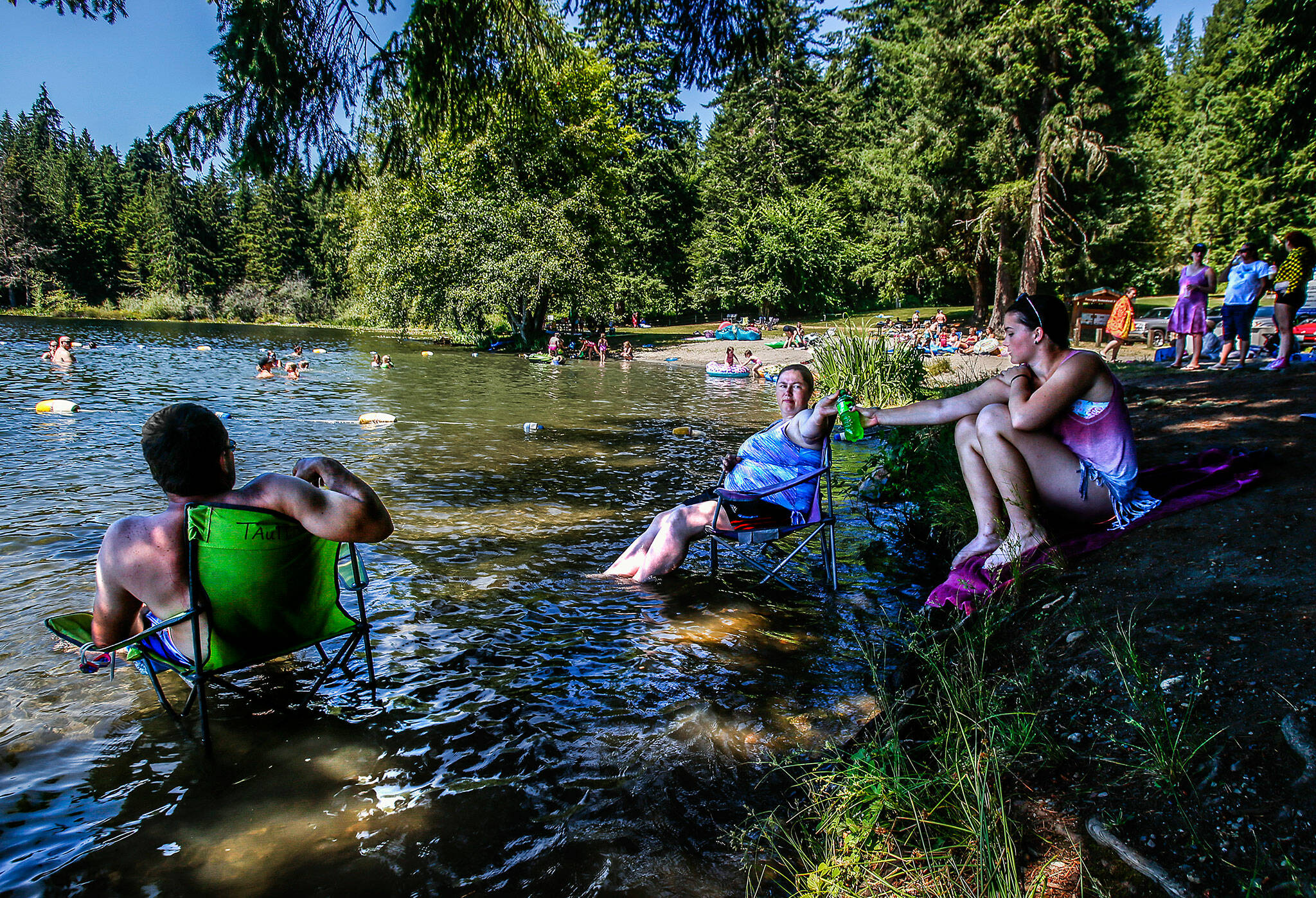LAKE ROESIGER — To help solve Lake Roesiger’s invasive aquatic plants problem, the Snohomish County Council passed an ordinance adding a service charge to properties abutting the lake.
Six invasive species, designated as noxious weeds, have been identified as threatening the lake’s health and recreational suitability, according to an executive summary from Tetra Tech, Inc., a consulting firm that specializes in lake science. Left unattended, the plants also put nearby lakes at risk.
Eurasian watermilfoil, invasive knotweed and fragrant waterlily are among the invasive species that are growing without any natural controls. The plants decrease lake oxygen levels, pose hazards for swimmers and make it difficult to boat and water ski, according to the consultant’s report.
“I’m speaking in favor of the draft ordinance, not because I like the idea of being taxed, but because it appears that only by involving surface water management will we be able to break through the tangle of government bureaucracy to address the invasive plants,” said Lake Roesiger resident Ron Johnson.
Snohomish County staff has worked with the Lake Roesiger community over the past two years to find a solution. In 2021, Surface Water Management developed a vegetation management plan with assistance of Tetra Tech.
It was approved by 70% of lake area residents, according to the same executive summary, and includes different goals and approaches for each invasive species. Largely, it aims to reduce the plant populations and prevent further spread.
This Lake Roesiger service charge will be billed to property owners through 2027. Then the community can request to continue maintenance by reenacting the charge, or the program will end.
The cost will be divided up between the 463 lake shoreline parcels. Property owners can expect to pay anywhere from $20 to $170, depending on the land.
Developed lakefront properties will pay the highest price at $170 annually, and undeveloped lakefront properties will owe $120. Parcel owners who share common beach access will owe $35 and developed property owners within the lake basin, but not on the lake, will owe $20. Developed property was defined as parcels with any sort of improvements, such as a gravel drive way or shed.
Pat Jasper, who owns three lakefront properties, was vehemently against the ordinance that will cost him an extra $510 annually.
“I’m on a fixed income. I make social security,” said Jasper. “I’ve been there about 30 years now, and there has always been lily pads on the middle lake. They have tried for 20 years to diffuse it, but they have not. … It isn’t going to work — it’s just money spent. I am opposed to this 100%.”
The ordinance was proposed Sept. 27 and has since had two public hearings.
At the first, six people spoke in support of the ordinance and two people spoke in opposition. On Wednesday, four people supported and two people opposed, but a handful of those speakers were familiar faces from the first hearing.
Lake Roesiger resident Lena Coleman-Meyer was one of those familiar faces.
“I spoke in support of this at the last meeting, and I’m ready to rock and roll,” Coleman-Meyer said.
Another familiar face showed support and echoed Johnson’s sentiments.
“Everyone has tried their own solutions, but never once have we come together as a community to try to address it as a whole,” said Ryan Madsen, a third-generation lakefront property owner. “To not pass this would do a great disservice to those folks.”
The Snohomish County Council passed the ordinance in a 4-1 vote, with Council Chair Megan Dunn providing the sole no vote.
“I voted no to give a voice to the concerns I heard from neighbors about using harmful chemical pesticides to control weeds,” Dunn said, explaining that chemical strategies should be a last resort.
Dunn said she appreciates the work put into the proposal by all parties, but the chemical pesticides will “disrupt the entire ecosystem of the lake” and to instead consider the existing alternative approaches.
Chemical aquatic herbicides will be used for some species, following Wednesday’s vote.
The fragrant water lily will be treated with a combination of Imazapyr and Imazamox, two chemicals that have “a highly favorable toxicological profile with little to no known human health and environmental risks,” according to the report.
“It was clear to me from the meetings I attended and public testimony that an overwhelming majority of the community supported the five-year plan,” said County Council member Sam Low.
Kayla J. Dunn: 425-339-3449; kayla.dunn@heraldnet.com; Twitter: @KaylaJ_Dunn.
Talk to us
> Give us your news tips.
> Send us a letter to the editor.
> More Herald contact information.

























